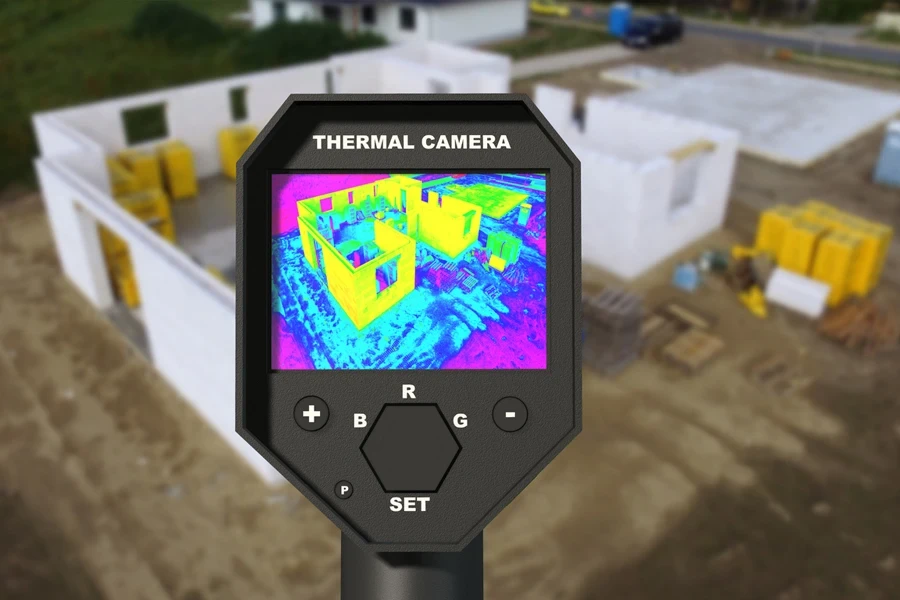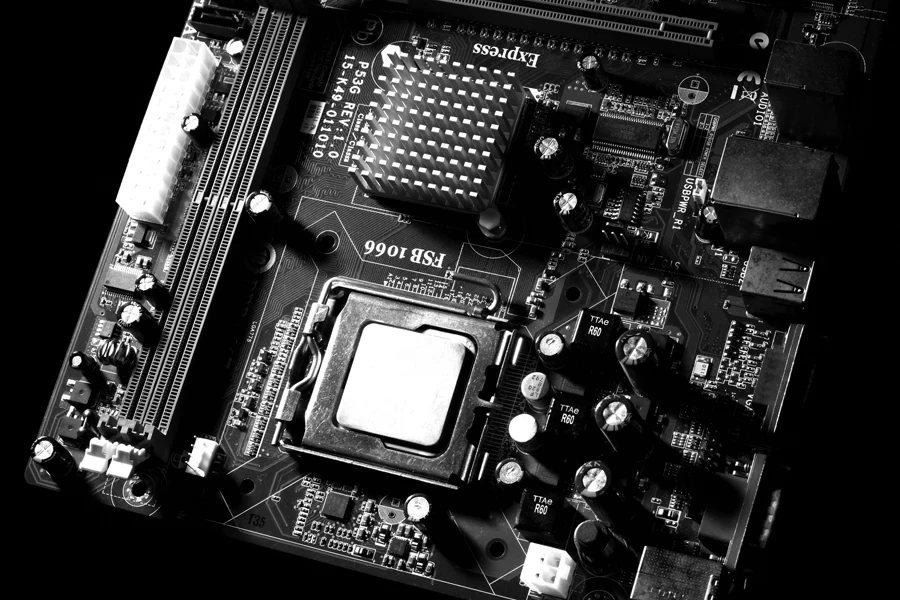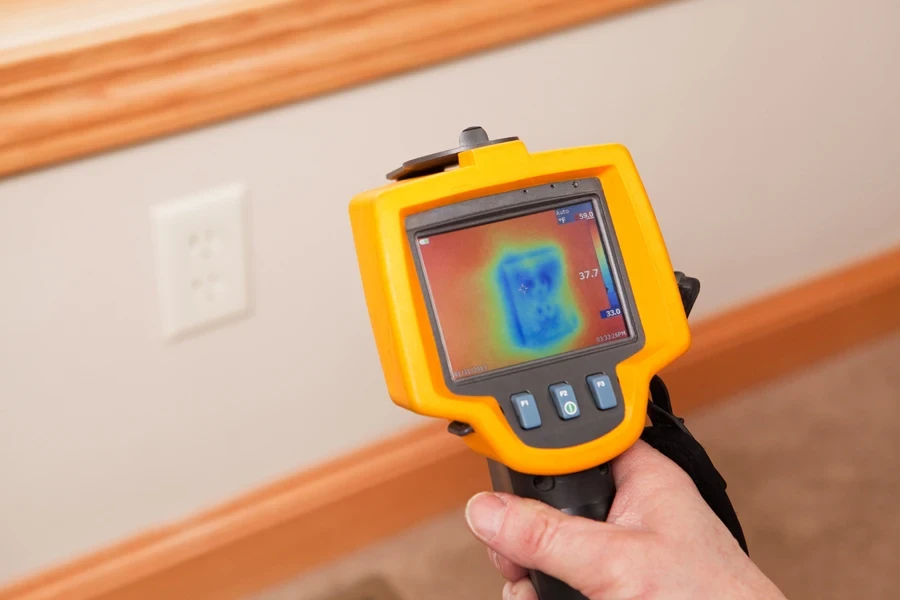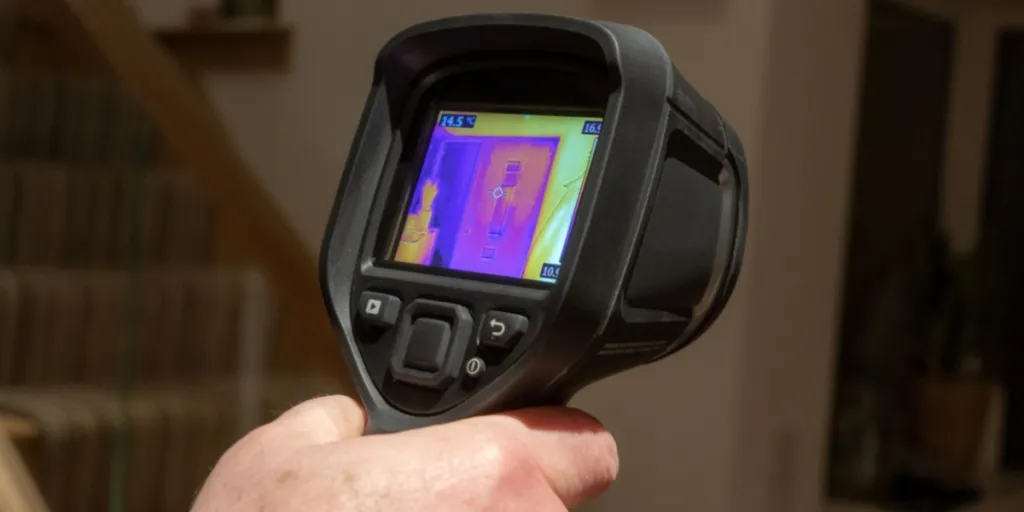Electromagnetic field (EMF) meters, used in thermal cameras to detect invisible electromagnetic fields, are a crucial element in electronics manufacturing and IT and an invaluable tool among facility managers and HVAC contractors.
From helping with quality control in production lines to energy audits in warehouses, these devices are more than just high-tech gear—they’re smart investments that can trim costs and streamline operations.
In this article, we’ll dive into what you should look for in a suitable thermal camera and outline specific usage scenarios.
Table of Contents
Top features to consider in handheld thermal cameras
Understanding thermal cameras’ technical specs
User-friendly features
Summary
Top features to consider in handheld thermal cameras

Resolution and image quality
As with most cameras and screens, the more pixels, the clearer the picture will be. Think of it like upgrading from standard-def resolution to HD TV.
For professionals in the field, we recommend starting with a resolution of at least 640×480 pixels. This provides a good foundation for detailed thermal imaging. To capture even finer temperature variations and heat patterns, consider stepping up to 1024×768 or higher.
Sensitivity range
Noise equivalent temperature difference, or NETD, is a fancy way of saying how good the camera is at spotting tiny temperature differences.
Thermal sensitivity is measured in millikelvin (mK), and the lower the number, the better the camera is at spotting these fluctuations.
Think of it like a game of “hot and cold”—a camera with 50 mK sensitivity is like a pro, telling you if you’re getting warmer even when you’ve barely moved. This super-sense is crucial for tasks like finding sneaky electrical issues or pinpointing where problem areas in medical scans. The lower the number, the better, but if you’re looking for serious functionality, look for cameras with 50 mK or lower.

Refresh rate
Refresh rate is measured in Hertz (Hz) and indicates how quickly a camera’s image updates – the higher the number, the smoother the video. If you’re likely wanting to track fast movement or need real-time feedback, aim for 30 Hz or higher.
Display options
Look for cameras with bright, crisp screens that you can read even when the sun’s out. Touchscreens are a nice bonus if you love a bit of pinch-and-zoom action. If you want to share your thermal discoveries with the world (or at least your team), check whta connectivity options the camera has and whether it can be hooked up to larger screens.
Battery life

Nothing’s worse than your camera conking out just when things are heating up. You’ll want at least 4-6 hours of juice for those marathon inspection sessions. Replaceable batteries are a lifesaver, and power-saving modes can be a real battery stretcher.
Durability and weather resistance
Let’s face it: thermal cameras aren’t just for cozy office use. They need to tough it out in the real world. Look for cameras that can take a tumble and keep on working. An IP rating of IP54 or higher means your camera won’t throw in the towel at the first sign of dust or drizzle.
Understanding thermal cameras’ technical specs

Detector type and technology
Now, let’s talk about the camera’s brain – the detector. It’s the magic wand that turns invisible heat into visible images. There are two main types: uncooled microbolometers and cooled detectors.
Uncooled microbolometers are like the reliable family sedan – affordable, tough, and good enough for most jobs. Cooled detectors, on the other hand, are super sensitive and give you crystal-clear images, but they come with a hefty price tag and require cooling to work.
Field of view
Think of the field of view (FOV) as your camera’s peripheral vision. A wide FOV is like having eyes in the back of your head – great for scanning big areas quickly. However, if you need to regularly zoom in on details, like inspecting a specific wire in a jumbled electrical panel, you’ll want a narrower FOV.
User-friendly features

Interface and controls
First up, the interface and controls. You want something that’s easy to use, even when you’re wearing gloves or working in tight spaces. Look for cameras with big, clear screens that show you all the details you need. Touchscreens are pretty nifty as they let you swipe and tap just like your smartphone. Some fancy models even let you customize buttons.
Connectivity options
These days, thermal cameras are getting as smart as our phones. Many have Wi-Fi and Bluetooth so that you can upload your images straight to your phone or laptop. But if you’re not into the wireless thing, don’t sweat it. Most cameras still have USB ports and SD card slots. Finally, if you need to show your findings on a big screen, look for a camera with HDMI output.
Software compatibility
This is where the magic happens after you’ve taken your thermal shots. Many cameras come with their own software, which can do some pretty cool stuff like detailed analysis and reporting.
But here’s a pro tip: Check if the camera works with other software, too. You might already have a favorite program for image editing or report writing. It’s a pain to learn new software just because your camera demands it.
Summary
With the breadth of options and features out there, picking the perfect handheld thermal camera can be tricky. In general, you’ll want a model that gets the job done without giving you a headache in the process.
Things like thermal sensitivity (how good it is at spotting tiny temperature differences), detector type (the camera’s brain, basically), field of view (how much you can see), and focus methods should top your checklist.
For a huge range of thermal cameras from trusted suppliers, make sure to check out the options on Alibaba.com.




